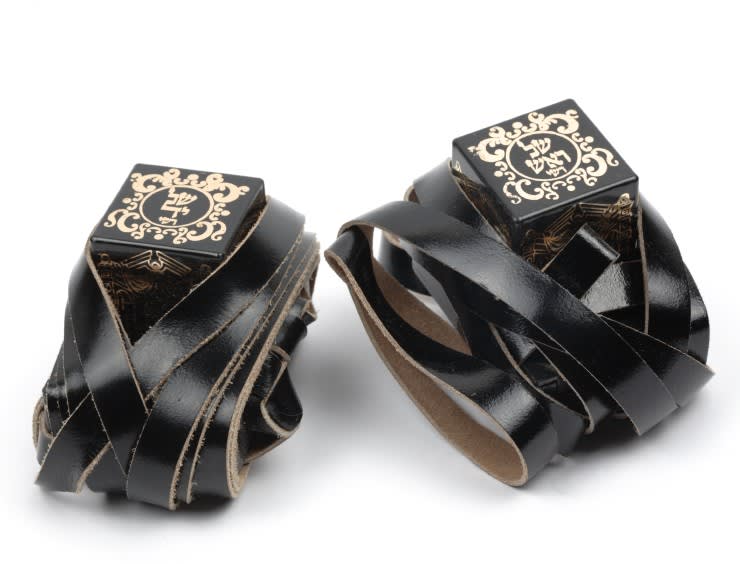Past columns have discussed various aspects of the mitzva of tefillin. In this column we will put together some of these insights to see how the entire order of putting on tefillin carries a powerful message of proper priorities in spiritual growth.
TIME OF TEFILLIN
The first stage in the mitzva of tefillin is for the proper time to arrive. Although Torah law permits wearing tefillin at any time, the sages prescribed that tefillin can be worn only during the day. When does the day begin for this purpose? The gemara tells us that it is when a person can distinguish an acquaintance from a distance of four amot (Berakhot 9b, SA OC 30:1).
Actually, the mishna gives a number of signs which tell us when this time has arrived, for example the time when we can distinguish a dog from a wolf. Even though the actual times are roughly the same, the halakha chose to use specifically the criterion of being able to distinguish one’s friend. This teaches an important moral lesson: before we are permitted to worry about our spiritual level by performing “religious” mitzvot like tefillin, we must be on an acceptable humane level where we are capable of discerning and recognizing our fellow man.
A CLEAN BODY
Before we can put on tefillin, we need to have a clean body – free of bodily wastes as well as abhorrent thoughts (SA OC 37:2). The gemara says that we need a clean body “like Elisha of the wings”, and goes on to explain that due to Elisha’s self-sacrifice in wearing tefillin, his tefillin were miraculously transformed into dove’s wings to save him from the Roman authorities which forbade tefillin.
Rav Kook explains how this miracle relates to the idea of cleanliness for tefillin. He writes that tefillin represent the unique spiritual level of the chosen Jewish people, who have a unique covenant with HaShem. However, this level needs to be built upon a solid foundation of integrity and thoughtful conduct in everyday affairs. This is the Divine inheritance of all mankind, and is expressed through the mundane but crucial prerequisite of “a clean body”. Once this foundational, universal element of derekh eretz is firmly ingrained, the tefillin are like birds wings which enable us to soar above this level (Shabbat 49a and Ein Ayah commentary).
ORDER OF THE TWO TEFILLIN
The hand tefillin is placed on the arm and next to the heart; this signifies sanctity of our actions and emotions. This tefilla is put on before the head tefillin, which signifies purity of thought. The crowning heights of spirituality are achieved only when we sanctify our thoughts and intellect, but this summit can be reached only with the proper preparation (SA OC 25:6). Also, we are not allowed to interrupt between the two tefillin (SA OC 25:9); we recognize that sanctity of action is not the ultimate end, and we need to maintain a striving for encompassing holiness which also includes our thoughts.
So we see that the “ladder of spirituality” is as follows: We need to start with ordinary humanity, or menschkeit – acknowledging our fellow human being. From there we can progress to moral integrity. Afterwards it is appropriate to sanctify our acts, and then our thoughts.
DEVIATIONS FROM THE IDEAL
A further insight is attained by examining deviations from the ideal:
Time of putting on tefillin: Tefillin can never be worn at night, but if someone has to leave early for a trip they can be put on a little before the time and the berakha is said at daybreak (SA OC 30:3). Someone who is completely benighted shouldn’t adopt even the external trappings of sanctity; this is a mere travesty. But if a person is still on the way he doesn’t have to refrain from appearance of sanctity; at the same time he should know that he hasn’t really accomplished anything if he lacks menschkeit – no blessing is said until daybreak.
Cleanliness: Tefillin can never be worn without a clean body. This teaches that without integrity no spiritual elevation is possible.
Order of tefillin: The order of hand and head tefillin is important enough that we pass over the head tefillah to don the hand tefilla first (SA OC 25:6). Yet if we lack the hand tefillah we should put on the head tefillah alone, and vice versa (SA OC 26).
Even though proper acts should precede and serve as the basis for our pure thoughts, there may be situations where there are psychological or practical obstacles to improving our behavior. Someone who finds it impossible to completely sanctify his acts – who can not start with his hand tefillah – should not be discouraged from forging ahead with his spiritual growth according to his ability, and should go ahead and put on his head tefillah. And obstacles to sanctifying the intellect should not deter us from taking the first step and repairing our conduct – if we do not have a head tefillah, we should go ahead and put on the hand tefilla.
Rabbi Asher Meir is the author of the book Meaning in Mitzvot, distributed by Feldheim. The book provides insights into the inner meaning of our daily practices, following the order of the 221 chapters of the Kitzur Shulchan Aruch.
The words of this author reflect his/her own opinions and do not necessarily represent the official position of the Orthodox Union.
